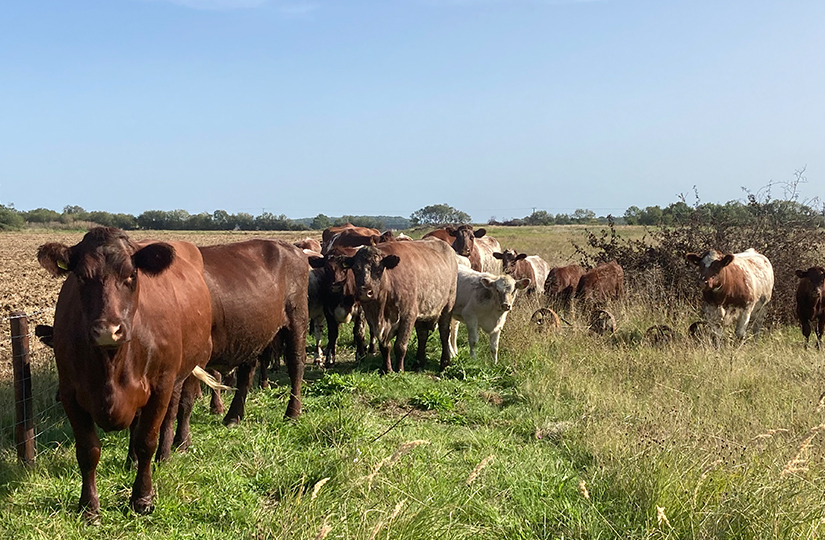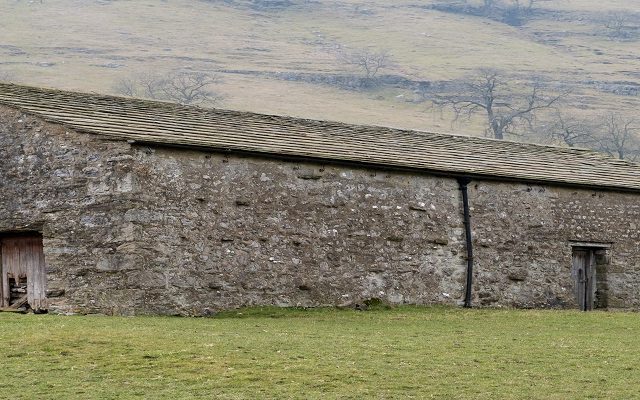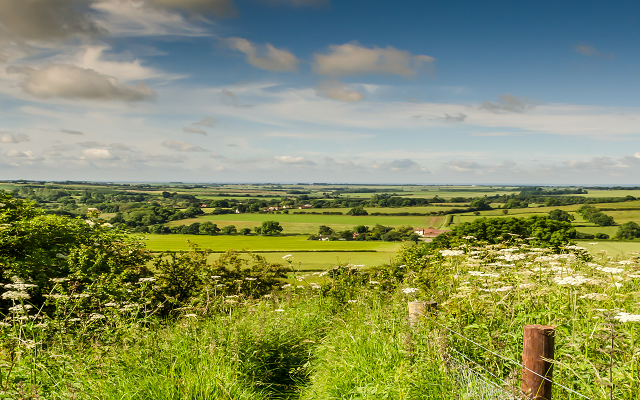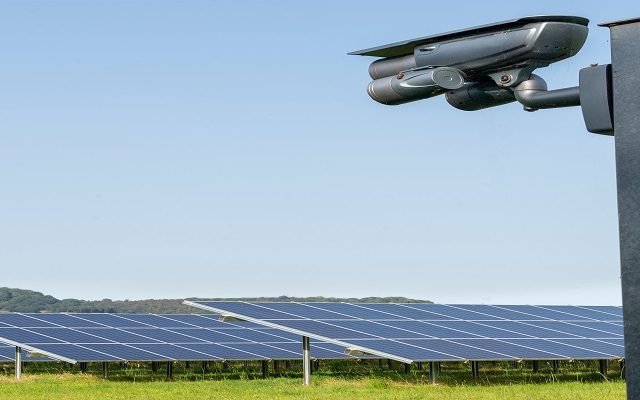Businesses we admire: Deene Park Estate
Deene Park Estate in Northamptonshire has opened up new income streams by working with its tenants to implement a whole-estate plan for Countryside Stewardship.
When one of your ancestors led the Charge of the Light Brigade in the Crimean War, it is perhaps not surprising to find the pioneering spirit still alive and well in the Brudenell family – owners of Deene Park Estate in Northamptonshire.
Covering around 1,470ha (3,635 acres), Deene Park actually forms part of the wider Brudenell Estate, which includes a further block of land in Leicestershire’s Welland Valley.
Predominantly agricultural, it also has a residential portfolio and a shoot, while the imposing Tudor hall and gardens are a well-known local visitor attraction.
Like all landed estates, however, it has had to move with the times – and quite radically since its current owner Robert Brudenell and his wife Charlotte took up the reins seven years ago.
The main challenge, identified soon after the Brexit referendum, was the pressure that the winding down of the existing Basic Payment Scheme would put on the 200ha (500 acres) of in-hand land, as well as the estate’s five Northamptonshire farming tenants.
Identifying future income streams
So Mr Brudenell and his team started weighing up the various options and looking for potential alternative income sources.
‘The estate is primarily agricultural – arable and beef – with only limited diversified income,’ says Rob Wilkinson, senior associate director at Strutt & Parker’s Stamford office, Lincolnshire, who advises the estate.
Furthermore, the opportunity for the tenants – and indeed the owners on their in-hand land – to boost productivity and so enhance profitability was limited by the nature of the ground.
‘Most of the agricultural land is Grade 3 land – heavy clay, slow draining with the usual inherent blackgrass problems,’ says Rob. ‘With the Willow Brook, a tributary of the Nene, flowing through and prone to flooding, it’s not a particularly productive estate.’
It was also very apparent when weighing up the options in 2016/17 that much of the agricultural infrastructure required investment, with a need for considerable expenditure on things like drainage, fencing and grain storage.
Agricultural policy changes
The impending changes to government support policy, with a shift towards ‘public money for public goods’, also coincided with a change of management, with the appointment of Mark Coombs as the new estate manager.
Both he and Robert Brudenell recognised that whatever taxpayer support for agriculture there would be further down the line, it was more likely to be for environmental delivery than producing wheat and beef.
Given that both the in-hand farm, and some of the tenancies, had been in previous environmental land management schemes, they already had some relevant experience to draw on.
The initial thought was to go for a Mid-Tier Countryside Stewardship agreement for the home farm and parkland, to give income a boost. But on closer inspection, the options appeared limited for an area of predominantly grassland. So thoughts started turning to Higher-Tier Countryside Stewardship.
And it soon became apparent that they were not alone in such thinking, with two of the estate’s larger tenants – the Readings and the Sansoms – also considering agri-environment options to maintain their viability.
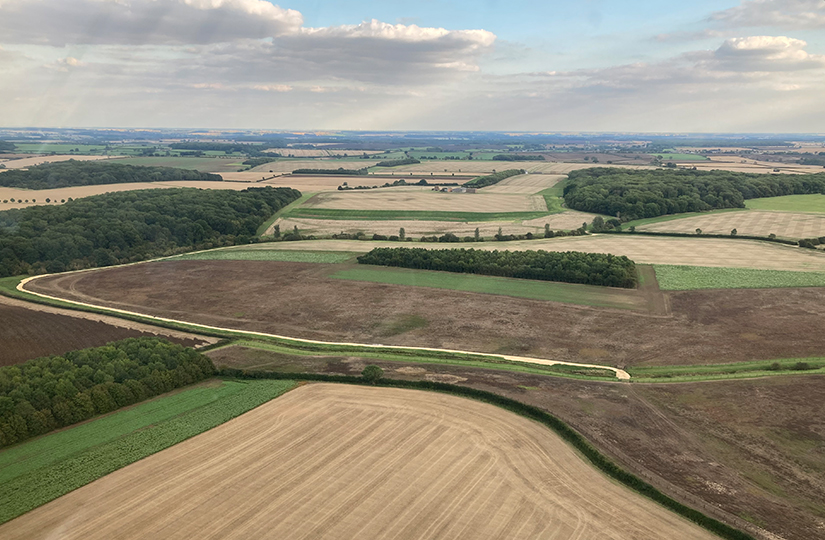
Collaborative approach
Mark was especially keen to involve the tenants at an early stage.
‘Prior to coming to Deene Park, I had spent 12 years managing Scottish estates,’ he says.
‘This has been highly influential to the approach we have taken here, as in Scotland there is a much greater emphasis on landowners working with their tenants and the wider community, as a prerequisite to acquiring public money.
‘It was in my make-up to involve all the tenants at Deene and try to move forward in partnership, with a whole estate approach.’
Once agreed with the owners, Rob was asked to start drawing up the plans, evaluating the anticipated loss of support from BPS cuts, the likely drop in output as a result of habitat creation and flood prevention measures, and the potential income gain from agri- environment payments.
‘It was fairly easy to demonstrate that the whole estate would be better off putting a significant area of land into stewardship,’ he recalls.
‘So we then entered an open discussion with the tenants, asking all of them to highlight on a map the areas of their various farms that were not really working for them. We then modelled the income impact, showing what they could make from the various Countryside Stewardship land management options.’
This made it very evident that it was a win-win, and so a whole-estate plan was presented to Natural England which, subject to a few tweaks here and there, was granted approval in 2018.
How the plan works in practice
‘The way it works is that we have a range of different management options available across 300ha (741 acres),’ says Rob. ‘We have a spreadsheet and meet with the tenants regularly to discuss who is going to do what each year.
‘Some of the options can rotate, and do so between holdings, all agreed prior to implementation.
‘It’s very much a collaborative approach, but we have shown that each tenant gets more from having a whole-estate plan than they would had they applied as individuals – plus they have more flexibility.’
The estate makes a single Countryside Stewardship claim to the Rural Payments Agency, manages the agreement and the proceeds are divvied up among the tenants according to who has been doing what.
So far, Rob estimates that the scheme has brought in around £93,000 each year for the combined land management options, while the estate has benefited from a further £244,000 in grants to help pay for the capital works on things like fencing, grassland creation and tree planting.
A positive impact
While the scheme is still bedding in, Robert Brudenell says the whole estate is already reaping the rewards.
‘It’s benefiting our tenants, as it has helped to underpin their income streams, having taken the lowest yielding land out of production and putting it in an agri- environment scheme with a fixed level of payment,’ he says.
And as well as the financial benefits, there is already a feeling that the whole estate is being better looked after, while creating new footpaths has enabled the wider public to appreciate the difference.
‘From a farming point of view, we have laid new access tracks, so livestock can now get to grazing ground that hasn’t been used for years,’ adds Mark.
‘We’ve also introduced Shorthorn cattle and recreated the parkland landscape, planting native trees.
‘Furthermore, the bird mixes are teeming with bird life, including skylarks and yellowhammers, and in summertime the buzzing in the pollinator mixes makes it hard to hear yourself think.’
The timing of all this has also been fortuitous, says Rob. ‘When the Environmental Land Management (ELM) scheme is introduced in 2024, we will be five years into our Countryside Stewardship scheme. That is when we reach our five-year break point.
‘So we can either get out of Countryside Stewardship and join ELM, or we can carry on for another five years, knowing that all the paperwork is done and it is going well.
‘Either way, as a collective we will have already recouped £93,000 a year that we would not have had if we had delayed, plus the additional capital grants.
‘In a cricketing analogy, I always say you should play the ball that is in front of you, rather than waiting to see what it looks like in three balls’ time. Already, our team and our tenants are learning about environmental delivery. Had we waited to 2024, it would have been a massive culture shock.’
This article is part of a wider Land Business Insights publication on The Future of the Estate. Navigating the changes that lie ahead for rural estates will require innovative thinking and a proactive approach. The team at Strutt & Parker is here to help you on that journey, working alongside you to evaluate your options and turn plans into action. Please do get in touch if you would like to talk about any of the report’s contents.
